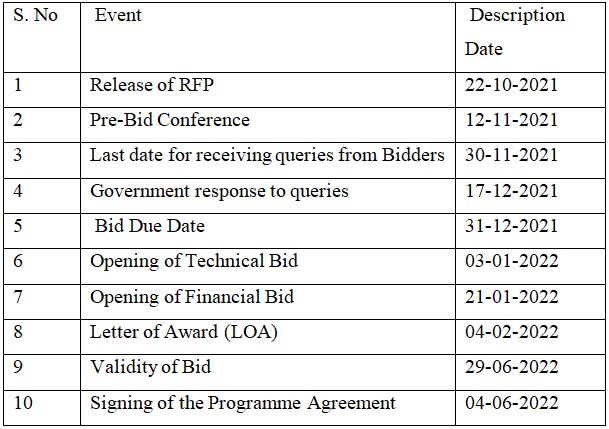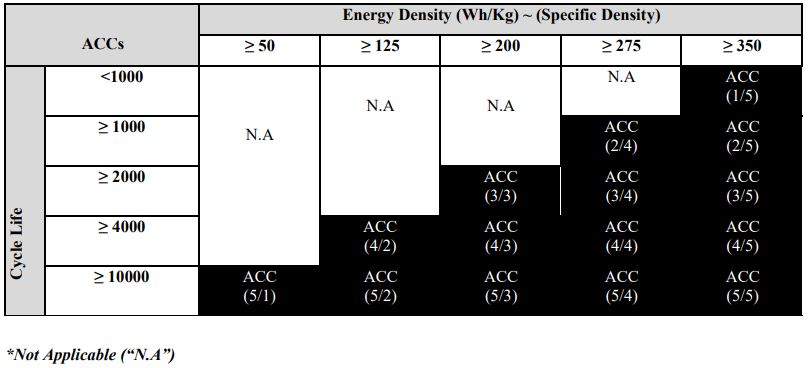
Governance Structure: Manufacturing Advanced Chemistry Cell Battery in India
The government of India approved the National Mission on Electric Mobility in 2011, and subsequently, National Electric Mobility Mission Plan 2020 was unveiled in 2013 by the then Prime Minister. As part of the mission, the Department of Heavy Industry notified a scheme, namely FAME-India, in April 2015 with the aim to incentivise electric vehicles.
To promote electric mobility, basic customs duty and GST were reduced and rationalised on electric vehicles, their assemblies/sub-assemblies, and parts/sub-parts / inputs of the sub-assemblies. This objective is further linked with the Production Linked Incentive (PLI) scheme.
PLI Scheme Details
- The scheme envisages setting up of a cumulative ACC manufacturing capacity of fifty (50) GWh for ACCs and an additional cumulative capacity of (5) GWh for Niche ACC Technologies.
- Incentives will be offered only to those firms (hereinafter called the “Beneficiary Firm”) that have been allocated ACC production capacity (with cumulative capacity for all beneficiary firms combined together 50 GWh) under the said Programme through a transparent mechanism by inviting the Request for Proposal (RFP). The beneficiary firm will have to commit to set up minimum of five (5) GWh of ACCs manufacturing facility. The total annual cash subsidy to be disbursed by the Government will be capped at 20GWh per beneficiary firm.
- In addition to 50 GWh of cumulative ACC capacity, 5GWh of cumulative capacity would be offered to “Niche” ACC technologies of higher performance with a minimum threshold capacity of500 MWh. This initiative would also be technologically agnostic. Only the higher performance parameters would be the pre requisite for being eligible.
- The manufacturing facility as proposed by the beneficiary firm under the RFP would have to be commissioned within a period of 2 years. The subsidy will be disbursed thereafter over a period of 5 years.
- The beneficiary has to ensure achieving a domestic value addition of at-least 25% and incur the mandatory investment (₹ 225 crore /GWh) within 2 Years (at the Mother Unit Level) and raise it to 60% domestic value addition within 5 Years, either at Mother Unit, in-case of an Integrated Unit, or at the Project Level, in-case of “Hub & Spoke” structure (the “Project”), as will be specified in the Request for Proposal (RFP).
- To ensure a Single-Window mechanism for the potential investors, a state-level grand- challenge will be initiated, including provision for encumbrance-free land, trunk infrastructure facilities, power at rationale rate to the potential investors for attracting the Projects in their states.
How to apply under the scheme to receive subsidies
Following central cabinet approval on May 12, 2021, the Ministry of Heavy Industries issued the Request for Proposal (RFP) under the PLI programme on October 22, 2021. Applications for the scheme were accepted until the morning of January 14, 2022 (11:00 IST).

Products Feature
The scheme covers ACCs and integrated advanced batteries (Single Units) that suffice the minimum performance specifications as provided hereunder (Shaded):

Eligibility criteria
- The Bidder for the purpose of shortlisting may be a sole firm/ single entity, AIF, Foreign Investment Fund or a group of entities (the “Consortium”), coming together to implement the Project. For the purpose of evaluation, in case of a Consortium, only the qualification criteria specified in Clause 2.2.3 of the Lead Member (as defined hereinafter) shall be considered. However, no Bidder applying individually or as a Member of a Consortium, as the case may be, can be a member of another Bidder. The term Bidder used herein would apply to both a single entity and a Consortium.
- A Bidder may be a natural person, private entity, public sector undertaking or any combination of them with a formal intent to enter into an agreement or under an existing agreement to form a Consortium. A Consortium shall be eligible for consideration subject to the conditions set out in Clause 2.2.9 below.
- A Bidder shall not have a conflict of interest (the “Conflict of Interest”) that affects the Bidding Process. Any Bidder found to have a Conflict of Interest shall be disqualified.
- A Bidder shall be liable for disqualification and forfeiture of Bid Security if any legal, financial, or technical adviser of the Government in relation to the Project is engaged by the Bidder, its Members, or any Associate thereof, as the case may be, in any manner for matters related to or incidental to such Project during the Bidding Process or 6 (six) months from the execution of the Programme Agreement. Notwithstanding the foregoing, such disqualification or forfeiture shall not apply where the Bidder has engaged or engage such legal, financial, or technical advisers for any matters other than advisory for the Project.
- In case the Bidder is not an AIF or Foreign Investment Fund: The Bidder shall have a minimum Net Worth of INR 225,00,00,000 (Rupees two hundred and twenty-five crore) per GWh. OR In case the Bidder is an AIF or Foreign Investment Fund: The Bidder shall have a minimum ACI at the close of the preceding financial year of INR 225,00,00,000 (Rupees two hundred and twenty-five crore) per GWh. $ Notwithstanding the foregoing, a Bidder may Bid for any capacity if such Bidder has a Net Worth of at least INR 1500,00,00,000 (Rupees fifteen hundred crores), under and in accordance with the terms of this RFP.
Amount of benefits that can be received from the government
The government has allocated INR 181 billion (US$2.49 billion) to the plan, which aims to build a local manufacturing capacity of 50 Giga Watt Hour (GWh) of ACC and five GWh of Niche ACC capacity. The incentives under the PLI system will be paid out over five years, beginning with the commissioning of the production plant. This is projected to result in economies of scale and increased exports, assisting big local and foreign firms in establishing a globally competitive ACC battery manufacturing facility in India. This, in turn, is critical for developing the domestic electric vehicle (EV) sector.
Fund Allocation

Incentive to the beneficiary Firms
- The amount of subsidy to be disbursed would be calculated as following: Applicable subsidy amount per kilowatt hour X (multiplied) Percentage of value addition achieved during the period X (multiplied) Actual sale of Advanced Chemistry Cells (in KWh), as shall be specified in the RFP.
- Incentive disbursement shall commence once the committed domestic value addition and actual sale of the ACCs begins.
- The amount of cash subsidy to be distributed to the beneficiary firm shall be disbursed quarterly.
- The actual subsidy disbursement to the Beneficiary Firm shall be Capped at 20% of the ACC Sale Price (Net of GST) i.e of the effective total turnover (Net of GST) on account of sale of ACC’s manufactured and sold by the beneficiary firm during the subsidy disbursement period as per the provisions to be specified in the RFP.
- The incentive claimed under this scheme will in no way debar/restrict for any incentive to be claimed under Faster Adoption and Manufacturing of (Hybrid&) Electric Vehicles in India (FAME-II ) or PLI scheme for Automobile and Auto components (of Department of Heavy Industry) where ACC may be used as a part of the end product.

Amey Khare
Amey Khare is a Research Scholar at Symbiosis International University and works as an Research Assistant at Symbiosis School of Banking and Finance.

